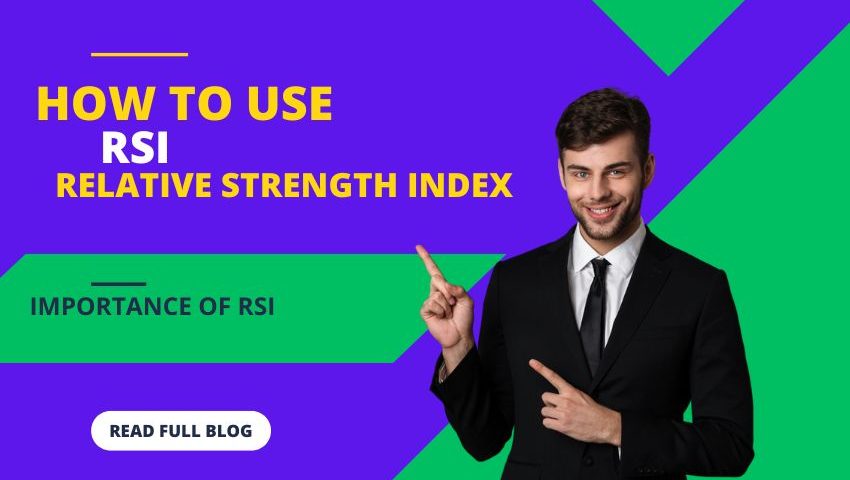How to Use RSI: Relative Strength Index: A Comprehensive Guide

The Ultimate Trading Glossary: Essential Terms Every Trader Should Know
September 27, 2024
Bollinger Bands: A Comprehensive Guide for Traders
September 28, 2024Introduction to RSI (Relative Strength Index)
When it comes to technical analysis in trading, RSI (Relative Strength Index) is a vital tool used by traders worldwide. This powerful momentum indicator helps traders determine overbought or oversold conditions, offering insight into potential price reversals and market trends.
What is RSI(Relative Strength Index)?
The Relative Strength Index is a momentum oscillator that measures the speed and change of price movements. The RSI moves between 0 and 100, typically used to signal overbought or oversold conditions in the market. This makes it a valuable tool for both novice and seasoned traders.
Why Is RSI Important for Traders?
RSI helps traders assess the strength of a price movement. It’s crucial for identifying trends, and potential reversals, and confirming whether a trend is likely to continue. Traders often rely on RSI to make more informed buying or selling decisions.
The Purpose of RSI (Relative Strength Index) in Trading
The main goal of RSI is to signal whether a security is being overbought or oversold. A high RSI value (typically above 70) indicates an overbought market, while a low value (usually below 30) suggests oversold conditions. Knowing this allows traders to plan their entry and exit points accordingly.
RSI vs Other Technical Indicators
While there are many technical indicators available, RSI stands out due to its simplicity and effectiveness. Compared to indicators like MACD (Moving Average Convergence Divergence) or Bollinger Bands, RSI provides clearer insights into market momentum.
How to Calculate RSI (Relative Strength Index)
Understanding how RSI is calculated can deepen your trading strategy and decision-making process.
Understanding the RSI Formula
The RSI formula is:RSI=100−(1001+RS)RSI = 100 – \left( \frac{100}{1 + RS} \right)RSI=100−(1+RS100​)
Where RS represents the average gain of the asset over a certain period divided by the average loss over that same period.
Breaking Down RSI Components
The two major components of RSI are gains and losses over some time, typically 14 days.
Gains and Losses in RSI
- Average Gain: This is the average of all positive price changes within a given period.
- Average Loss: This is the average of all negative price changes within the same period.
Time Frames for RSI Calculation
The most common period for RSI calculation is 14 days, though traders can adjust this depending on their strategy. Shorter periods make RSI more sensitive, while longer periods smooth out fluctuations.
Interpreting RSI Readings
RSI Ranges: Overbought and Oversold
RSI readings are typically divided into three main zones:
- Above 70: Indicates an overbought condition
- Below 30: Suggests an oversold market
- Between 30 and 70: Neutral zone
RSI Values Above 70
A value above 70 means the asset may be overbought, potentially leading to a market correction or price drop. Traders might look to sell when RSI crosses above 70.
RSI Values Below 30
On the other hand, an RSI below 30 suggests the asset is oversold, signaling a possible buying opportunity. This is where traders often look to enter the market.
RSI Divergence
Divergence occurs when the price and RSI move in opposite directions. For example, if the price is increasing while RSI is decreasing, it could signal a potential reversal.
Using RSI in Trading Strategies
RSI for Trend Confirmation
RSI can be used to confirm trends. When the RSI moves in line with the overall price trend, it indicates that the trend has momentum and could continue.
Combining RSI with Moving Averages
Many traders combine RSI with moving averages to improve accuracy.
Simple Moving Average (SMA)
When RSI crosses above or below the SMA, it often signals a trend reversal or confirmation.
Exponential Moving Average (EMA)
Using RSI with the EMA can help identify more recent price movements and provide clearer signals.
RSI for Reversal Signals
RSI is excellent for spotting reversals. A crossover from the overbought or oversold region often signals a change in trend direction, helping traders take advantage of market fluctuations.
RSI Trading Mistakes to Avoid
Over-Reliance on RSI
While RSI (Relative Strength Index) is powerful, it shouldn’t be the sole indicator of your strategy. Relying too heavily on RSI without considering other factors can lead to poor decisions.
Ignoring Market Conditions
Volatile Market Conditions
In highly volatile markets, RSI can give false signals. Traders should always account for market volatility before making decisions based solely on RSI.
Using RSI in Sideways Markets
RSI works best in trending markets. In sideways markets, it may not provide accurate signals, so using additional indicators is recommended.
Best Practices for RSI in Different Markets
Using RSI in Stock Trading
RSI is widely used in stock trading to time entry and exit points, especially during volatile periods.
Using RSI in Forex Trading
In the Forex market, RSI helps traders gauge currency strength and spot potential reversals during currency fluctuations.
Using RSI in Crypto Trading
The fast-paced nature of cryptocurrency markets makes RSI a valuable tool for spotting overbought and oversold conditions quickly.
Conclusion
RSI is an essential tool in every trader’s toolkit. By understanding how to calculate it, interpreting the readings, and combining it with other strategies, traders can make more informed decisions and increase their chances of success.
FAQs
1. How reliable is RSI for day trading?
RSI is highly reliable for day traders when used in conjunction with other technical indicators.
2. What is the best time frame for RSI?
The default 14-day period works well, but traders can adjust it based on their strategy.
3. Can RSI be used in volatile markets?
Yes, but traders should be cautious and combine it with other indicators to avoid false signals.
4. What is RSI divergence?
RSI divergence occurs when the RSI and the asset’s price move in opposite directions, often signaling a reversal.


